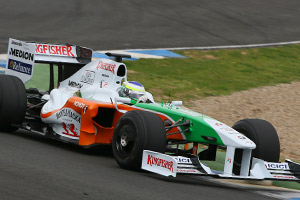No, no, no, no, no.Conceptual wrote:If the McLaren suspension was designed with a specific torsional stiffness of the chassis in mind, it will not work (well) with a chassis that has less, or more. It is tuned to the chassis, so unless FIF1 tuned their chassis to have the exact numbers that the McLaren does, who could hope that it would be competitive?
The suspension geometry comes from how the teams want to work the tyre.
The rigidity comes from how much the teams are willing to put up with the added weight for increased stiffness.
Suspension geometries are linked to pick-up point stress concentrations - not necessarily local or even global rigidity.
The McLaren chassis - just like every other car on the grid - is a compromise of rigidity versus weight. The designers make the compromise that they think works best.
In recent years, McLaren has went for a lighter chassis with more flexibility while Ferrari have drove in the other direction. Both have been right to varying degrees with each car better suited to different tracks and track conditions.
In a perfect car - there will be zero local deflection, with the designer having complete control over the degree of chassis twist from front axle to rear axle. In practice, this does not happen.
Even then - they all go different directions with chassis twist as they all seek different compromises of weight:rigidity.

